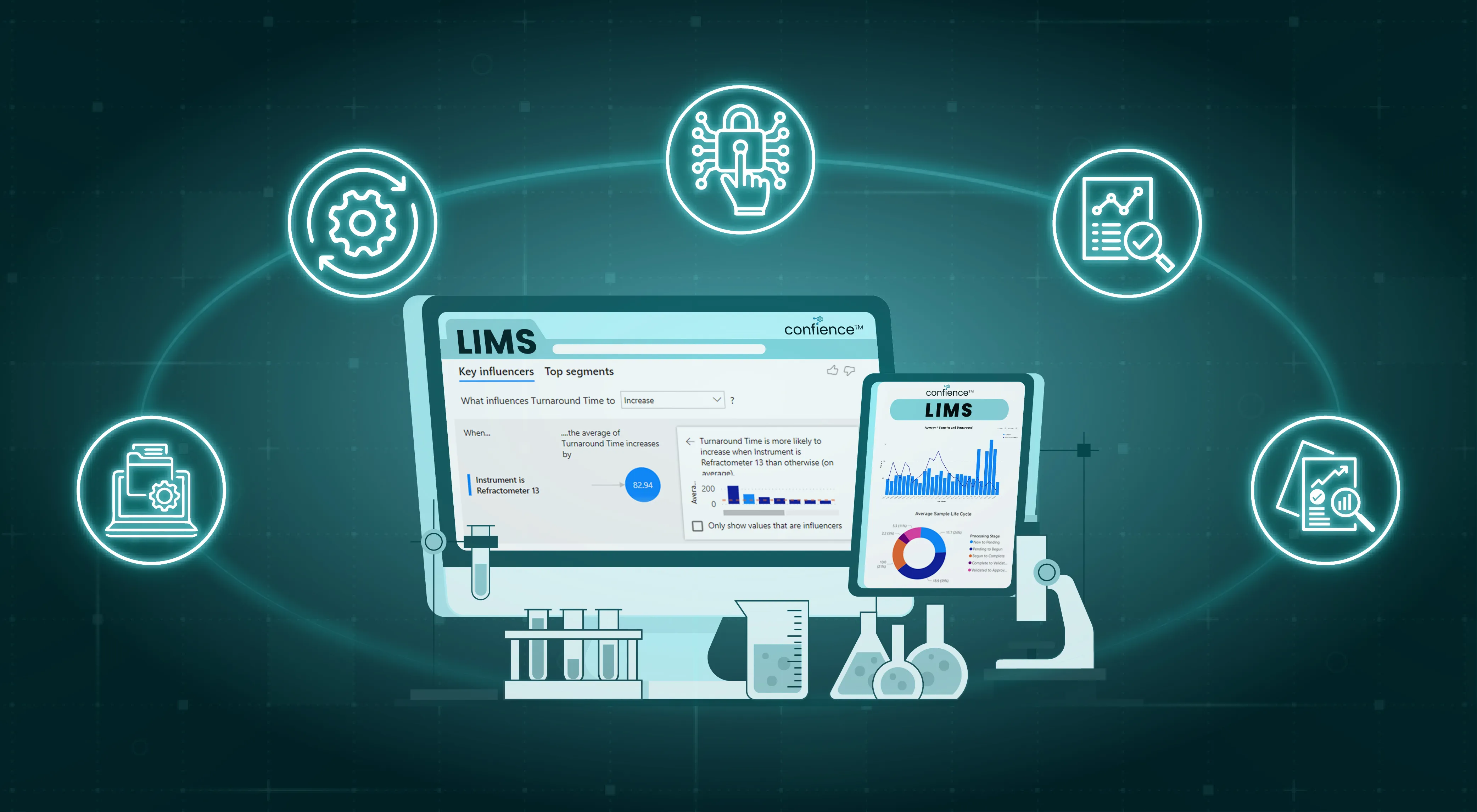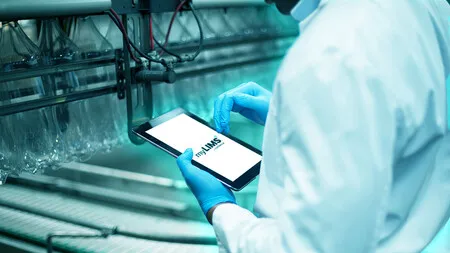January 10, 2025
Maximize Efficiency: 5 Tips for Streamlining Laboratory Data Management
Table of Content

As technology evolves and the volume of data increases, laboratories must adopt more efficient data management strategies to ensure accuracy, enhance productivity, and maintain compliance with regulatory standards. Here are five essential tips to help you streamline laboratory data management in an efficient and secure manner.
1. Utilize a Laboratory Information Management System (LIMS):
Invest in a modern LIMS system to manage sample tracking, data entry, analysis, and reporting in a single platform, minimizing manual data handling and potential errors. LIMS software will:
- Ensure data quality from sample collection through project completion.
- Maintain robust compliance and proactive risk management across your laboratory operations.
- Optimize your laboratory performance through trusted KPIs.
2. Standardize Data Entry:
A LIMS simplifies and streamlines data entry with pre-defined, version-controlled templates customized to match your lab’s unique tests and analysis. These templates are designed to capture all necessary information in a consistent format, reducing variability that can occur when different individuals input data. For instance, fields are pre-set for parameters like sample ID, date, time of collection, and tests to be performed, ensuring data consistency.

To further reduce data entry errors and ensure uniformity, a LIMS utilizes controlled vocabularies and dropdown menus. This means that users select from predefined options rather than entering data manually. Such controls help eliminate issues like spelling errors, synonyms, and other inconsistencies that could lead to data discrepancies and misinterpretations.
Additionally, a lab information management system allows direct data capture from laboratory instruments, via bar-coding and scanning, and/or through integration with other systems. This automation minimizes human input and thereby reduces the chance of errors. Once the data is captured, analysts may visually validate data, if desired, prior to the system automatically populating the relevant fields in the database. This not only streamlines workflows but also enhances data integrity by preventing manual data entry mistakes.
3. Data Validation and Quality Control:
Data validation is essential in laboratory settings to confirm that laboratory data collected is accurate, complete, and congruent with the predetermined standards and protocols. A LIMS can validate data against standard criteria, including data qualifiers and limits, and alert users to anomalies, thereby ensuring that data integrity is maintained throughout the workflow.
A LIMS system can be programmed with specific rules that automatically validate data as it is entered. For instance, it can verify that entered values fall within acceptable ranges or that mandatory fields are not left blank. This immediate feedback helps prevent the entry of erroneous data right at the source.
A LIMS allows laboratories to manage the scheduling and recording of control sample testing and instrument calibration. By ensuring that these critical quality checks occur at regular intervals, LIMS help in maintaining the accuracy and precision of laboratory measurements.
A LIMS performs statistical analyses to monitor quality control data, identify trends, and alert laboratory personnel when results deviate from established control limits. This proactive approach helps in averting major quality issues before they affect the test outcomes.
Customizable alerts can be set up to warn users of any anomalies or deviations from expected patterns in data. This feature enables immediate corrective actions, thereby enhancing the overall quality of the laboratory outputs.

4. Automate Laboratory Tasks:
Leverage the LIMS capabilities to automate tasks like sample scheduling, calculations, alerts, and report generation, improving efficiency.
To ensure adherence to sampling plans, regulatory requirements or to simply provide better integration with other applications, many laboratories need to schedule the automatic login of samples. A LIMS allows users to easily create sampling schedules for the short or long term to eliminate errors, avoid missing required samplings and conserve valuable time.
Laboratory data management systems offer robust calculation features, supporting a wide range of mathematical functions like Boolean algebra. Functions such as [IF], [THEN] etc., are especially useful when working in the GLP or GMP environments. In addition, calculations can initiate stored procedures that execute business rules such as the automatic registration of samples, updating records in an ERP system or any other logically derived function to ensure the smooth processing of information within the organization.
LIMS systems can be configured to allow emails, text messages and/or reports to be automatically issued whenever the status of a record changes. For example, lab team members can be informed immediately when a product fails to meet product specifications, either via a text or email, or reports can automatically be issued to customers and submitters when all testing has been completed, and data review has been performed. Utilizing the automation functionality inherent in the LIMS, enhances the speed of information dissemination and eliminates time-consuming tasks.
5. Access Controls and Audit Trails:
A LIMS will ensure data quality and security by implementing user access controls and detailed audit trails to track data modifications.
By defining roles and permissions, a LIMS ensures that only authorized personnel can enter or modify data. This layer of security prevents unauthorized data changes and facilitates good auditing practices within the laboratory.
LIMS audit trails provide a detailed log of all data entries, changes, modifications, and deletions, along with a timestamp and information about the user who made these changes. This not only helps with monitoring data integrity but also allows labs to attain or maintain regulatory compliance with regulations such industry standards such as ISO 17025, FDA 21 CFR Part 11, TNI/NELAC or GLP/GMP guidelines.
Conclusion:
In conclusion, effective data management is crucial for the success and sustainability of any laboratory. With a robust LIMS, standardized data entry, validation measures, data quality tools, task automation, and secure access controls with audit trails, any laboratory can achieve a higher level of efficiency and data integrity. These steps will not only streamline your laboratory's operations but also enhance the overall quality of your data.
Confience delivers automated lab management and data you can act on, for trusted products and a thriving planet. Want to learn more about Confience? Request a demo at www.confience.io.
Best-in-class LIMS
Built for your success
See what makes Confience different. Speak with a member of our team.
Schedule a Demo







